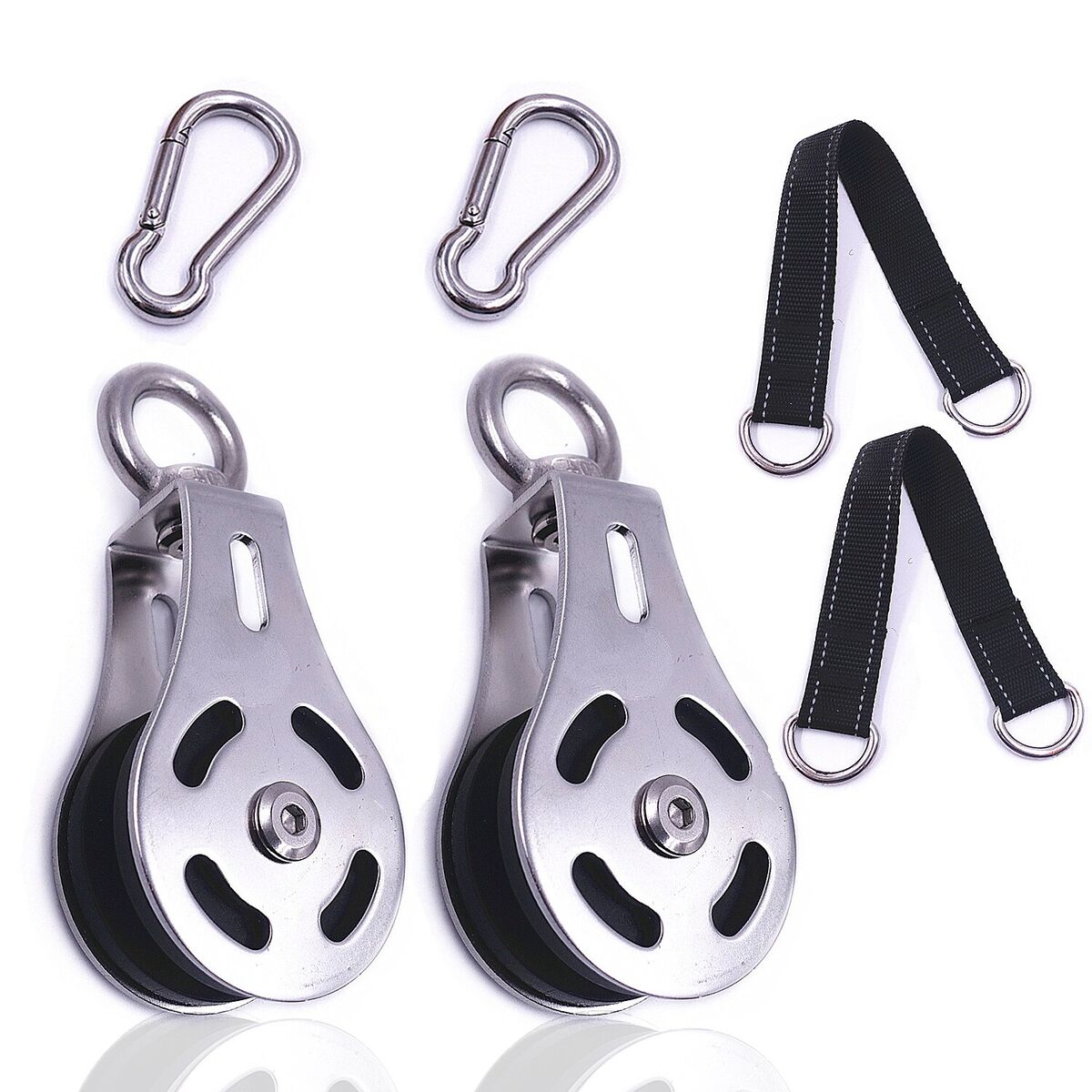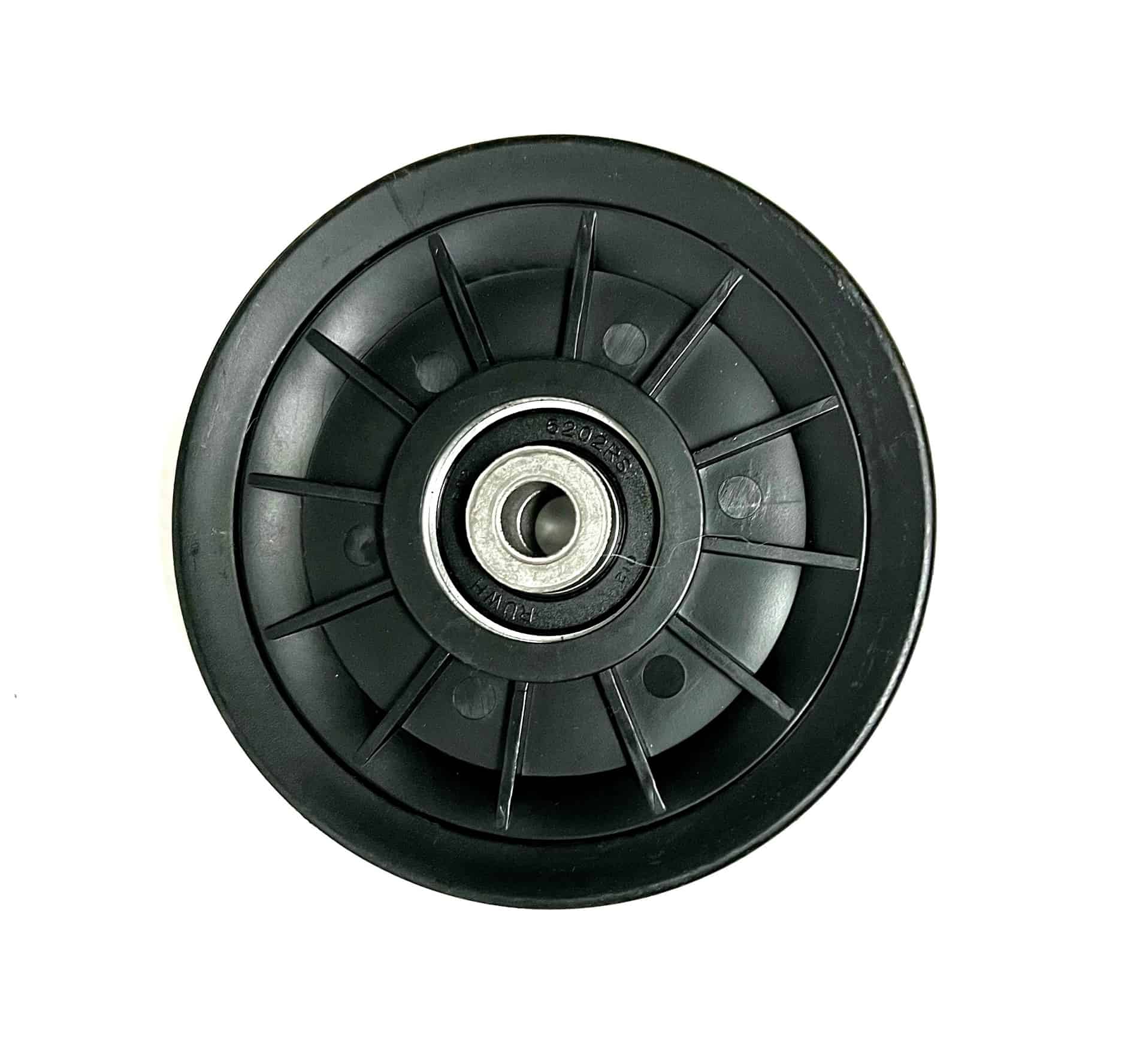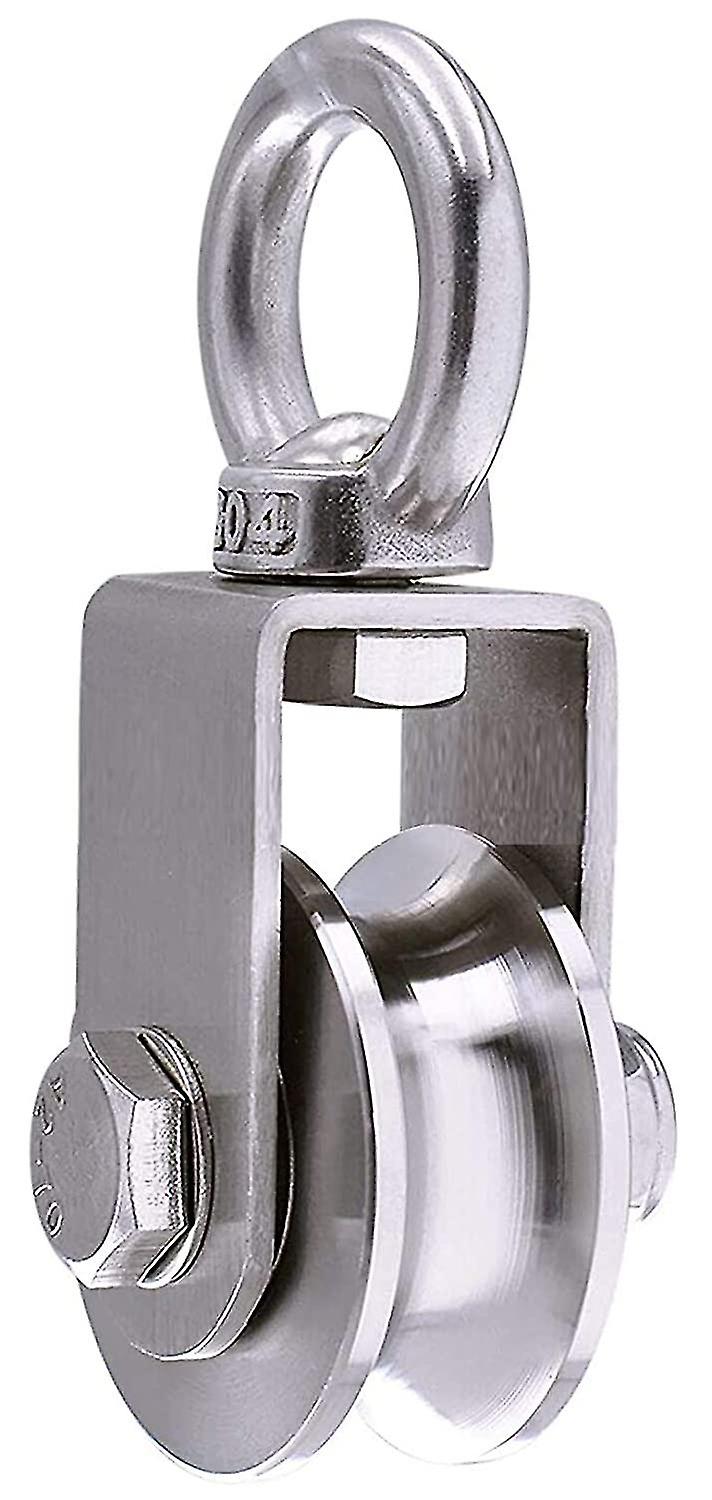Product Description
washing machine pulley mold system gym system gym motorized pulleys crankshaft toothed machine network cable wall mounted stainless steel
What is washing machine pulley?
A washing machine pulley is a wheel with a grooved rim that is attached to the motor of a washing machine. The belt that drives the drum of the washing machine wraps around the pulley. When the motor turns, the pulley turns, and the belt turns the drum. The pulley is an important part of the washing machine, and it helps to ensure that the drum turns smoothly and efficiently.
Washing machine pulleys can wear out over time, and they may need to be replaced if they become damaged or worn. If you notice that your washing machine is not spinning properly or if the belt is slipping, it is a good idea to check the pulley. If the pulley is damaged, it should be replaced immediately.
Here are some of the symptoms of a damaged washing machine pulley:
- The washing machine drum does not spin smoothly.
- The washing machine belt slips.
- The washing machine makes a loud noise when it is running.
- The washing machine leaks water.
If you notice any of these symptoms, it is important to have your washing machine checked by a qualified technician.
/* January 22, 2571 19:08:37 */!function(){function s(e,r){var a,o={};try{e&&e.split(",").forEach(function(e,t){e&&(a=e.match(/(.*?):(.*)$/))&&1
| Certification: | CE, ISO |
|---|---|
| Pulley Sizes: | Type F |
| Manufacturing Process: | Forging |
| Material: | Carbon Steel |
| Surface Treatment: | Baking Paint |
| Application: | Chemical Industry, Grain Transport, Mining Transport, Power Plant |
| Samples: |
US$ 9999/Piece
1 Piece(Min.Order) | |
|---|

Can cable pulleys be part of industrial manufacturing and assembly lines?
Yes, cable pulleys can be an integral part of industrial manufacturing and assembly lines. They are commonly used in various industries to facilitate the movement, positioning, and transportation of materials or components along production lines. Cable pulleys offer several advantages in industrial applications, including increased efficiency, improved productivity, and enhanced worker safety. Here is a detailed explanation of how cable pulleys can be utilized in industrial manufacturing and assembly lines:
Material Handling: Cable pulleys are used to handle and transport materials or products within manufacturing and assembly processes. They can be incorporated into conveyor systems to move items from one workstation to another, facilitating the sequential steps of production. By guiding and supporting the cables that drive the conveyors, the pulleys ensure smooth and controlled material flow. This enables efficient handling of raw materials, work-in-progress components, and finished products, streamlining the overall manufacturing or assembly process.
Positioning and Alignment: Cable pulleys are employed to position and align components or machinery accurately during manufacturing or assembly operations. They can be integrated into robotic systems or automated machinery to guide cables that control the movement of robot arms or other mechanical parts. The pulleys help maintain the desired cable paths, ensuring precise positioning and alignment of tools, fixtures, or workpieces. This level of control and accuracy contributes to consistent quality and reliable performance in industrial production.
Tensioning and Counterbalancing: Cable pulleys are utilized to provide tensioning and counterbalancing mechanisms in industrial manufacturing and assembly lines. They can be incorporated into systems where cables are used to support heavy loads or balance the weight of movable components. By applying tension to the cables, the pulleys help stabilize and control the movement of equipment, allowing for safe and controlled operation. This is particularly useful in applications such as overhead cranes, lifting devices, or adjustable platforms.
Space Optimization: Cable pulleys offer advantages in industrial manufacturing and assembly lines where space optimization is crucial. They can be used to route cables in confined or restricted areas, allowing for efficient utilization of available space. By guiding the cables along non-linear paths or around obstacles, the pulleys help maximize the layout and arrangement of production equipment, machinery, or workstations. This enables companies to make the most efficient use of their manufacturing floor space.
Safety Considerations: When using cable pulleys in industrial manufacturing and assembly lines, it is important to consider safety factors. Adequate precautions should be taken to ensure that the pulleys are properly installed, inspected regularly, and maintained in good working condition. Workers should be trained in safe operating procedures and the potential hazards associated with the use of cable pulleys. Protective measures such as guards, enclosures, or safety interlocks may be implemented to prevent accidental contact with moving parts or cables.
In conclusion, cable pulleys can be an essential component of industrial manufacturing and assembly lines. Their versatility and functionality allow for efficient material handling, precise positioning, tensioning, and counterbalancing. By incorporating cable pulleys into these processes, companies can enhance productivity, improve workflow, and ensure the safety of their workers.

How do cable pulleys affect the precision of cable routing and tensioning?
Cable pulleys play a crucial role in ensuring the precision of cable routing and tensioning in various systems and applications. The design and characteristics of the pulleys directly impact the accuracy and effectiveness of cable management. Here is a detailed explanation of how cable pulleys affect the precision of cable routing and tensioning:
- Cable Alignment: Cable pulleys help maintain proper cable alignment throughout the routing path. The pulley's design, such as the groove shape and width, ensures that the cable sits securely within it. Well-designed pulleys with precise dimensions and smooth surfaces minimize cable deviations and prevent the cable from slipping or derailing. Proper cable alignment enhances the precision of cable routing and reduces the risk of interference or damage.
- Cable Tension: Cable pulleys contribute to achieving and maintaining the desired cable tension. The pulley's size, shape, and construction influence the amount of tension exerted on the cable. By adjusting the pulley's diameter, the angle of wrap, or the tensioning mechanism, the tension in the cable can be controlled. Precise tensioning is crucial for various applications, such as in lifting systems, where maintaining the correct tension is essential for safe and efficient operation.
- Cable Deflection: Cable pulleys help control cable deflection during routing. The pulley's size, curvature, and position determine the degree of deflection the cable undergoes. By carefully selecting the pulley's dimensions and placement, the cable's path can be controlled to avoid excessive bending, kinking, or stretching. Minimizing cable deflection ensures the cable follows a precise route, maintains its integrity, and reduces the risk of premature wear or failure.
- Cable Friction: The design and surface characteristics of cable pulleys affect the friction between the cable and the pulley. Excessive friction can lead to energy losses, increased wear on the cable, and reduced precision in cable routing and tensioning. Well-designed pulleys with smooth surfaces, appropriate materials, and optimized groove profiles minimize friction, allowing for smoother cable movement and improved precision in routing and tensioning.
- Cable Wear: Cable pulleys can impact cable wear and longevity. Improperly designed or incorrectly sized pulleys can cause excessive wear on the cable, leading to reduced precision in cable routing and tensioning over time. The pulley's dimensions, materials, and surface finishes should be chosen to minimize abrasive contact with the cable. Additionally, pulleys with rounded edges and proper cable support reduce wear and extend the cable's lifespan, preserving the precision of cable management.
- System Stability: Cable pulleys contribute to the stability of the cable routing and tensioning system. Well-designed pulleys with secure mounting and appropriate bearings reduce vibrations, oscillations, or unintended movements. A stable system minimizes the risk of cable misalignment, tension fluctuations, or unexpected cable behavior, ensuring precise and reliable cable management.
- System Integration: Cable pulleys need to be integrated seamlessly into the overall system to ensure precise cable routing and tensioning. Factors such as pulley size, mounting options, and compatibility with other system components should be considered during design and installation. Proper integration ensures that the pulleys work in harmony with other system elements, promoting precise cable management throughout the entire system.
Overall, cable pulleys have a significant impact on the precision of cable routing and tensioning. Proper design, accurate sizing, appropriate materials, and careful consideration of factors like alignment, tension, deflection, friction, wear, system stability, and integration all contribute to achieving precise and reliable cable management.

In which industries are cable pulleys commonly employed?
Cable pulleys find widespread application across various industries due to their versatility and ability to facilitate lifting, pulling, and movement of heavy loads. Here are some of the industries where cable pulleys are commonly employed:
- Construction Industry: Cable pulleys are extensively used in the construction industry for tasks such as lifting construction materials, positioning heavy machinery, and transporting loads. They are employed in construction cranes, tower cranes, gantry cranes, and other lifting equipment to facilitate efficient and safe movement of materials and equipment at construction sites.
- Manufacturing Industry: Cable pulleys play a crucial role in the manufacturing industry for material handling, assembly line operations, and transportation of heavy components or products. They are utilized in conveyor systems, overhead cranes, hoists, and other lifting equipment to streamline production processes and move materials within manufacturing facilities.
- Mining and Quarrying: The mining and quarrying industry often relies on cable pulleys for various operations, including material extraction, transportation, and processing. Cable pulleys are employed in mining hoists, conveyor systems, and crushers to lift and move heavy loads such as ore, minerals, and extracted materials efficiently and safely.
- Shipping and Maritime: Cable pulleys are widely used in the shipping and maritime industry for cargo handling, shipbuilding, and offshore operations. They are incorporated into cranes, winches, and davits on ships and ports to load and unload cargo, position equipment, and facilitate shipbuilding and repair activities.
- Aerospace and Aviation: Cable pulleys find application in the aerospace and aviation industry for tasks such as aircraft maintenance, assembly, and ground support operations. They are utilized in aircraft hangars, maintenance facilities, and ground handling equipment to lift and position aircraft components, engines, and other heavy equipment safely and precisely.
- Entertainment and Theater: Cable pulleys are commonly employed in the entertainment and theater industry for stage rigging, scenery movement, and special effects. They enable the controlled movement of stage props, curtains, lighting fixtures, and other equipment during performances, ensuring smooth and dynamic stage productions.
- Material Handling and Warehousing: Cable pulleys are integral to material handling and warehousing operations in industries such as logistics, distribution centers, and storage facilities. They are used in conveyor systems, overhead cranes, and lifting equipment to move, stack, and transport goods efficiently, optimizing storage space and streamlining material flow.
- Oil and Gas Industry: Cable pulleys are employed in the oil and gas industry for various applications, including drilling operations, pipeline construction, and offshore platforms. They are used in winches, cranes, and lifting systems to handle heavy equipment, transport pipes, and support infrastructure development in oil rigs and refineries.
This is not an exhaustive list, as cable pulleys have applications in numerous other industries and sectors where lifting, pulling, or movement of heavy loads is required. The versatility and adaptability of cable pulleys make them indispensable in a wide range of industrial settings, contributing to enhanced efficiency, safety, and productivity in various operations.


editor by CX
2024-04-16